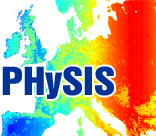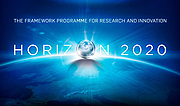Application Scenarios |
HyperSpectral Imaging (HSI) systems can be exploited as a powerful analysis tool for applications in environment and ecology, aquaculture, forestry, agriculture, and geoscience. Because hyperspectral image analysis is applicable to a wide range of research topics this selection can be enlarged according to the user needs and new fields of applications can be developed. HSI advantage over broadband sensors is its ability to detect molecular absorption and particle scattering signatures of constituents. The finer spectral resolution of a hyperspectral imager allows detection of surface materials, as well as inferences of biological and chemical processes. This capability plays an important role in addressing issues like sustainability and environment encompassing the following key areas: agriculture, forestry, geology/soil, coastal/inland waters, and environment. |
The specific application scenarios, which will guide the testing and validation of a spaceborne HSI platform in the framework of PHySIS, have been identified as:
Concerning the case of terrestrial application scenarios, the outcome of the PHySIS project could be exploited for:
|
Methods and quality metrics are defined to assess the performance of a given system and that will be used to optimize the system. These metrics consider all the individual steps involved including the complexity and cost of the fabrication process for novel hyperspectral imaging sensors, the imaging capabilities of considered systems with respect to spatial, spectral and temporal resolution and integration capabilities with other components. The evaluation targets both space and terrestrial applications. In this context, trade-offs between metrics such as weight, size, cost, power consumption, throughput, spatial and spectral resolution are being evaluate |
Achievements



